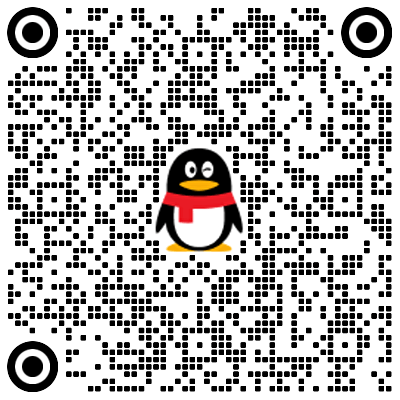JS预加载3
这次我们来做上一张和下一张按钮,HTML部分直接贴出来,反正就是strong元素只是做个显示展示,不做操作,然后在他的顶部覆盖一层span元素,这个元素做操作层。
效果图:

html代码:
div class="">
<div id="photo_masked"></div>
<div id="photo_big">
<i class="photo_off"><span class="off">+</span></i>
<h2 id="photo_title">预加载图片</h2>
<div class="big">
<img src="images/loading.gif" alt="" class=""/>
<strong class="sl"><</strong>
<strong class="sr">></strong>
<span class="left"></span>
<span class="right"></span>
</div>
</div>
</div>css部分就不多说了,没啥高端操作,position: absolute;定位就行,span元素两个左右对半平分图片的宽度。
js部分,首先我们对hover做一个反馈,因为默认strong元素是透明的,当鼠标移动到左边的span上时,显示strong,移动到右边时,左边的strong透明,右边的显示。
//显示上一张下一张图标
$('#phpoto_big .big .left').hover(function(){
$('#phpoto_big .big .sl').animation({
'attr' : 'o',
'end' : 50,
'time' : 30
});
},function(){
$('#phpoto_big .big .sl').animation({
'attr' : 'o',
'end' : 0,
'time' : 30
});
});
$('#phpoto_big .big .right').hover(function(){
$('#phpoto_big .big .sr').animation({
'attr' : 'o',
'end' : 50,
'time' : 30
});
},function(){
$('#phpoto_big .big .sr').animation({
'attr' : 'o',
'end' : 0,
'time' : 30
});
});显示效果做好后就是对图片做一个切换,当点击左边的时候切换到上一张图片。
之前我们已经对左右两张大图做了缓存,当你点击一张后会自动缓存左右的两张,我们只需要将缓存好的图片地址拿给弹窗显示的img即可。
因为缓存左右两张大图的操作是在img.click事件中的,而我们切换是在span.click中的,所以还需要将之前的图片地址放入对应左右两个span元素中去,也是自定义一个src属性。
//将图片地址传出去
$('#phpoto_big .big .left').attr('src',prev_img.src);
$('#phpoto_big .big .right').attr('src',next_img.src);图片地址传出去后,我们便可以获取到然后再修改。
//上一张
$('#phpoto_big .big .left').click(function(){
$('#phpoto_big .big img').attr('src',$(this).attr('src'));
});这样单次操作完成了,但是只能点击一次,第二次就无效了,所以我们点击后还要再次获取左右两张大图。
首先我们先获取到当前元素的索引值,然后就可以和之前预加载2中的一样,通过两个方法获取到左右两张的索引值。
但是我们无法直接获取到这个索引,因为你是span的click事件,并不是img的,那么我们将img的索引先传出来,丢给弹窗中img,自定义一个属性保存。
//将点击的图片索引值传出去
$('#phpoto_big .big img').attr('index',$(children).index());这样我们点击图片后,当前图片的索引值传入img自定义属性index中,然后我们点击上一张的时候再计算一下。
//点击上一张后再次获取当前图片索引值
prevIndex(parseInt($('#phpoto_big .big img').attr('index')),$('#photo').first())
//$('#phpoto_big .big img').attr('index') 这个获取到之前传入的索引值
//但是这个索引值是string类型不能用于计算,这里用parseInt()转换,保留整数并转换为Number类型
//然后通过prevIndex()计算出上一个,这个上一个也就是本身的索引值,父元素使用$('#photo').first(),因为#photo中每个dl都对应一个img,这里使用photo合适。
获取到当前索引后,我就可以获取到当前元素,然后通过parentNode获取到dl元素,然后再使用prevIndex()计算出上一张的索引,然后故技重施,将预加载2中的代码再运行一次
//上一张
$('#phpoto_big .big .left').click(function(){
$('#phpoto_big .big img').attr('src',$(this).attr('src'));
var children = $('#phpoto dl dt img').getElemet(prevIndex(parseInt($('#phpoto_big .big img').attr('index')),$('#photo').first())).parentNode.parentNode;
var prev = prevIndex($(children).index(),children.parentNode);
var next = nextIndex($(children).index(),children.parentNode);
//创建用于储存预加载图片的元素
var prev_img = new Image();
var next_img = new Image();
prev_img.src = $('#photo dl dt img').getElementBase(prev).attr('bsrc');
next_img.src = $('#photo dl dt img').getElementBase(next).attr('bsrc');
//将图片地址传出去
$('#phpoto_big .big .left').attr('src',prev_img.src);
$('#phpoto_big .big .right').attr('src',next_img.src);
//将点击的图片索引值传出去
$('#phpoto_big .big img').attr('index',$(children).index());
});这样写就可以了,但是很大一串都重复了,我们将重复的部分封装一下:
function prev_next_img(children){
var prev = prevIndex($(children).index(),children.parentNode);
var next = nextIndex($(children).index(),children.parentNode);
//创建用于储存预加载图片的元素
var prev_img = new Image();
var next_img = new Image();
prev_img.src = $('#photo dl dt img').getElementBase(prev).attr('bsrc');
next_img.src = $('#photo dl dt img').getElementBase(next).attr('bsrc');
//将图片地址传出去
$('#phpoto_big .big .left').attr('src',prev_img.src);
$('#phpoto_big .big .right').attr('src',next_img.src);
//将点击的图片索引值传出去
$('#phpoto_big .big img').attr('index',$(children).index());
};调用部分:
//上一张
$('#phpoto_big .big .left').click(function(){
$('#phpoto_big .big img').attr('src',$(this).attr('src'));
var children = $('#phpoto dl dt img').getElemet(prevIndex(parseInt($('#phpoto_big .big img').attr('index')),$('#photo').first())).parentNode.parentNode;
prev_next_img(children)
});
//下一张
$('#phpoto_big .big .right').click(function(){
$('#phpoto_big .big img').attr('src',$(this).attr('src'));
var children = $('#phpoto dl dt img').getElemet(nextIndex(parseInt($('#phpoto_big .big img').attr('index')),$('#photo').first())).parentNode.parentNode;
prev_next_img(children)
});至此已经完成。
效果图:

本文系作者 @木灵鱼儿 原创发布在木灵鱼儿站点。未经许可,禁止转载。




暂无评论数据